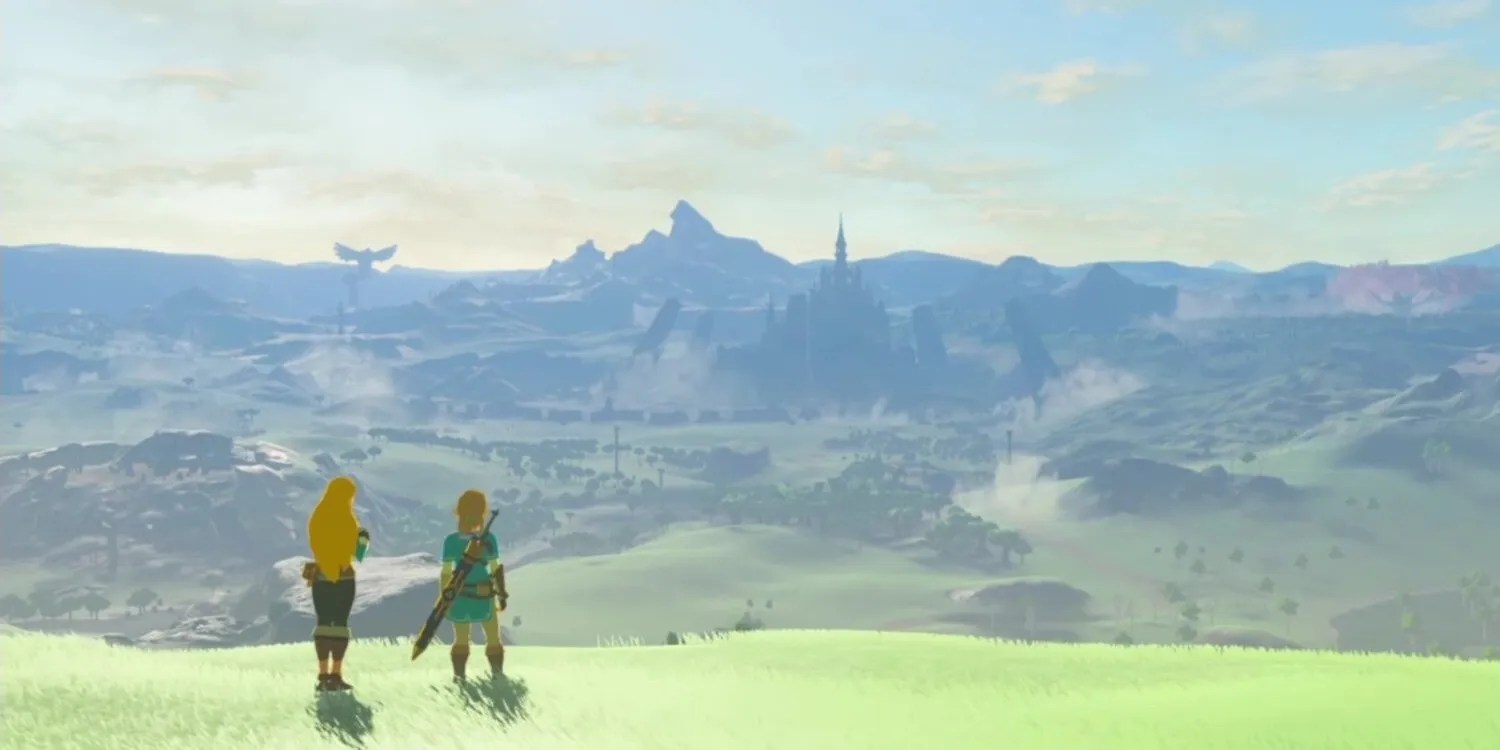Nintendo hit an absolute home run withThe Legend of Zelda: Breath of the Wildin early 2017 alongside the launch of the Nintendo Switch. It brought the franchise back to its dominance of theaction adventure genre, and introduced an entirely new generation of gamers to the wondrous world of Hyrule. The new open world design and encouragement to explore and discover at one’s own pace was hailed as a breath of fresh air after some felt thatSkyward Swordwas an example of the formula becoming too tired.The Legend of Zelda: Tears of the Kingdomwill push the new look of the franchise forward as a sequel toBotW.
In just a matter of days,The Legend of Zelda: Tears of the Kingdomwill hit store shelves, and it’s already almost guaranteed to be a massive success. The game looks to have built upon nearly every aspect inBreath of the Wildand fine-tuned it to a near perfect degree. While this is undoubtedly exciting, there is the possibility thatNintendomay have perfected the open world style ofThe Legend of Zelda, with little wiggle room in terms of where to go next. At the risk of repeating the franchise fatigue sentiments surroundingSkyward Sword, the company should perform another stylistic refresh by going back to the series roots.

RELATED:Zelda: Tears of the Kingdom May Have Sealed the Fate of a Major Franchise Tradition
Breath of the Wild Was a Breath of Fresh Air
In many ways,Breath of the Wildwas already a return to the traditional and purest form of the franchise. The 2017 Switch game shared many similarities in design philosophy to theNESZelda, released way back in 1986. In that classic title, the game just drops players in, with no guidance as to where the player should go or what objectives there are. Instead, gamers were taught to look around and discover the world, with no pressure of what tasks to complete and in no set order. It proved that simplicity is sometimes best and resulted in a world of complete freedom, which was a marvel of game design for the time.
Breath of the Wildwas build upon the same foundation: an open world environment that gave players access to the entirety of Hyrule after a brief tutorial sequence in theGreat Plateau. The world in the game is a sandbox to play around with various tools available to Link, and just become lost in the serene beauty of its surroundings. This Hyrule, ravaged by war and left as a sprawling landscape of days gone by, is free for players to dive into in any order they choose.

Breath of the Wild is a Double Edged Sword
While this new open world style forThe Legend of Zeldahas reinvigorated the series, it was crafted at the expense of some older elements from prior games. In many waysBreath of the Wild, and by extensionThe Legend of Zelda: Tears of the Kingdom, are so drastically different from other entries in the series because of these omissions. Fans have come to associate things like dungeons, emphasis on music and playing instruments, and iconic NPCs as part of everyZeldagame. These past few games have ditched many of these elements or swapped them out in the place of something else.
Dungeons built around a theme (such as an element or puzzle concept) were replaced with shorter and visually similar Shrines. While these were engaging to play, they were disappointingly similar to each other, with no differing changes to appearance depending on where they were discovered in the game’s world. Furthermore,music inBreath of the Wildtook a backseat, instead emphasizing silence to drive the atmosphere with only occasional audio cues to hint at a player that something interesting was nearby.

RELATED:Zelda: Tears of the Kingdom Needs a Different Approach to Music Than Breath of the Wild
A Return to Classic Zelda
Understandably, it would be far too difficult for Nintendo to craft unique locations and scenarios all while still maintaining the same level of freedom present inBreath of the Wild. For this reason, afterTears of the Kingdomhas had its time in the sun, it may be worthwhile to return to a more traditional style for the next adventure. Whether that be a 2D game likeA Link to the Pastor 3D entry likeOcarina of Timewould be up to the developer, but both of these models are more in line with what audiences traditionally associate withThe Legend of Zelda.
Nintendo seems to have already exhausted the open world template for a Zelda game withTears of the Kingdom. Previews have showcased outlandish abilities such as theUltrahandthat fully take advantage of playing around in a sandbox environment. Players are encouraged to make their own fun, and mess around with the world to see the limits of what’s possible. While that sounds enjoyable,Tears of the Kingdomis beginning to morph into an entirely new beast that at a glance may not even be recognizable as an entry inThe Legend of Zeldaseries, and has more in common withMinecraftin terms of focus on player creativity and experimentation.
Allowing a few years to go by afterTears of the Kingdom’s launch before introducing a more traditional Zelda adventure may be the best route for Nintendo to take. Of course, jumping back into the samemistakes ofSkyward Swordwouldn’t be advised. If the developers can create a balanced experience that holds onto the freedom of the earlier games while incorporating the epic narratives seen in games likeMajora’s MaskandTwilight Princess, the studio may have another winner on its hands.
The Legend of Zelda: Tears of the Kingdomwill be released on May 12 for the Nintendo Switch.
MORE:Zelda: Tears of the Kingdom - Link Can’t just Leave Hyrule’s Citizens to Their Own Devices